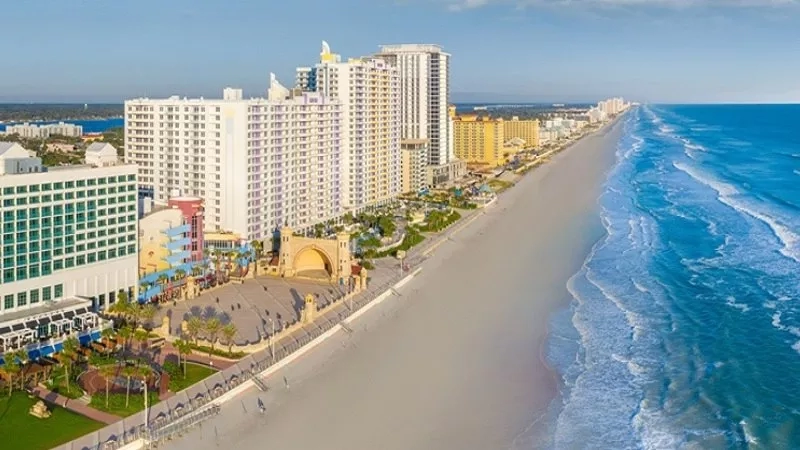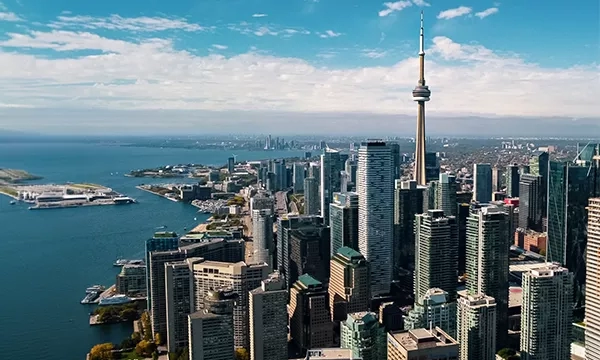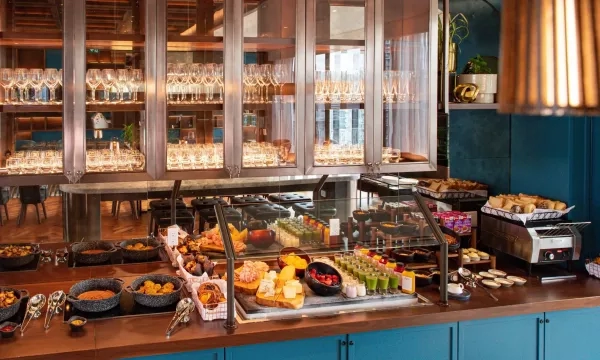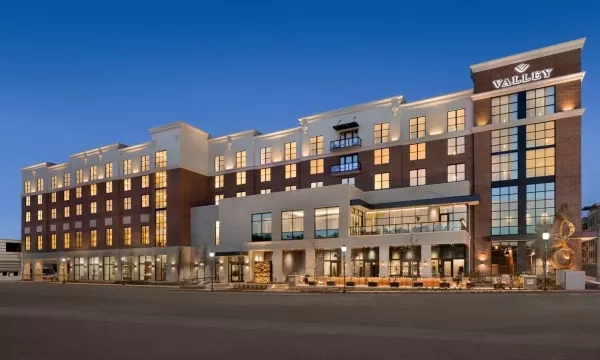Every destination has nice hotels, decent weather (most of the time), and a list of things to do. But today, that’s not enough. Planners, tourists, and attendees are picking the kind of experience they want to remember.
That’s where many convention visitor bureaus (CVBs) and destination marketing organizations (DMOs) hit a wall. You’ve got tight budgets, big expectations, and a long list of stakeholders to keep happy. And while you’re juggling all that, you're expected to stand out from every other destination pitching the same old story.
In this blog, we’ll break down why experience-led marketing is the new standard and how it can help your destination win over event planners and leisure travelers alike. We’ll cover what it really means to shift your strategy, how to bring local stories front and center, and how small teams can pull it off without burning out.
The real challenges CVBs and DMOs face today
Marketing a destination isn’t exactly a walk in the park. Whether you’re part of a powerhouse CVB or a two-person DMO team wearing every hat, the challenges are stacking up.
The goal is to attract and keep the attention of planners and travelers. And in a world where they have more choices (and higher expectations) than ever, it’s tough to cut through the noise.
Here’s what most CVBs and DMOs are up against:
Fierce competition. You’re not just competing with neighboring cities. You’re up against destinations across the globe offering similar features.
The same old story. Many destinations market the same way: “We’ve got hotels, attractions, great weather.” It’s not enough anymore.
High stakeholder expectations. From hoteliers and board members to local businesses and government officials, everyone wants results, fast.
Pressure to prove ROI. Budgets are tight, and you’re constantly asked to show exactly how your efforts are driving tourism dollars.
Tech that doesn’t quite fit. Most platforms are designed for massive teams or mega-budgets. Smaller teams are left stitching together workarounds.
Administrative overload. Juggling RFPs, tracking leads, qualifying business, managing partnerships... all while trying to focus on big-picture strategy.
Lean teams, limited time. There’s never enough time or hands to do it all, especially when tools feel clunky or overly complex.
And just to top it off, you're expected to consistently hit KPIs or risk your entire strategy being questioned. Sound familiar?
It’s a tough environment. But there’s a smarter way to approach destination marketing and its one that leans into what actually makes people book a trip or an event: the experience.
Supercharge your CVB's digital marketing presence with these 7 tips
Why the old way isn’t working
Posting skyline shots and rattling off venue capacities just isn’t cutting it anymore. Sure, logistics matter. But if your marketing is all about stats and specs, you're going to get lost in a sea of sameness.
Planners and travelers are looking for more than just a place. They’re looking for a vibe. They want a story to tell. And if your destination feels like it could be swapped out with any other on the list, you’re not going to stay top of mind.
The old playbook had its moment. Things like:
A big focus on venue size, airlift, and hotel inventory
Generic taglines that could apply to anywhere
Marketing campaigns centered around “what” your destination has and not “why” someone should care
But times have changed. Experience is the new currency. Planners want to know what their attendees will feel when they arrive. Leisure travelers want something authentic, something worth sharing. And when the expectation is “give me something unforgettable,” a bullet point list won’t cut it.
The destinations winning right now are selling stories. The ones that don’t shift gears risk falling behind.
What is experience-led marketing, really?
Experience-led marketing is about flipping the script. Instead of leading with specs, you lead with stories. You focus on the feeling of being in your destination, not just the facts about it.
Think:
Not “We have 500 hotel rooms downtown,”
But “Wake up steps from the waterfront and grab a latte from the local roaster before your morning keynote.”
Experience-led marketing taps into what makes your place yours. It focuses on:
Local flavor. Spotlighting your food scene, hidden gems, cultural spots, and personality-packed neighborhoods.
Emotions over features. What will someone remember after they leave? What will they post about? What moment will they talk about on the plane ride home?
Real voices. Sharing stories from locals, past visitors, and event planners who’ve “been there, done that” and loved it.
Immersive storytelling. Using video, photos, and digital experiences to bring your destination to life before anyone even books.
It’s not about ditching logistics. It’s about making people care enough to look at the logistics.
Experience-led marketing works because it’s human. It’s memorable. And in a market where everyone’s shouting the same things, it gives you something different to say.
Show, don’t tell: 10 ideas to make the shift
Ready to shake up your strategy? Here are simple, actionable ways to pivot to experience-led marketing without blowing the budget or rebuilding your whole campaign from scratch.
1. Lead with real stories
Swap out stock copy for first-hand stories from locals, attendees, and past visitors. Feature planners who’ve hosted successful events and what made their experience memorable.
2. Use video to bring the vibe
A 30-second video showing live music spilling into the street or a group bonding over a sunset dinner says more than a paragraph ever could. Destination sizzle reels still work but go beyond the postcard.
3. Curate "Only Here" experiences
Highlight what makes your destination unlike anywhere else. Think kayaking to a meeting, dining in a historic theater, or farm-to-table tours with a twist.
4. Make your events easy to picture (literally)
Event planners want to see the possibilities. Tools like Cvent Event Diagramming help bring your venues and layouts to life. They make it easier for planners to imagine their event in your space.
5. Bundle local gems into themed itineraries
Create half-day or full-day sample agendas for different audience types—corporate groups, incentive travelers, bleisure explorers. Make it easy for planners to pitch the destination internally.
6. Keep it social-worthy
Planners and visitors alike want that Instagram moment. So spotlight visual experiences, murals, rooftop views, and quirky local finds that get shared without even asking.
7. Put your partners in the spotlight
Feature local chefs, artisans, musicians, guides, and venues. Let them help tell your story and in the process, strengthen community buy-in and local relationships.
8. Get found where planners search
Make sure your destination stands out on platforms like the Cvent Supplier Network with vibrant profiles, photos that capture the energy, and clear event-friendly info.
9. Simplify group booking experiences
Once you've wowed a planner or group traveler with your story, make it easy for them to follow through. Tools like Cvent Passkey let them book rooms quickly. No back-and-forth emails required.
10. Show the ROI of great experiences
Don’t forget to track and share the wins. Whether it’s increased attendance, positive attendee feedback, or economic impact. Back your storytelling with simple, real-world results.
Why planners (and attendees) crave this approach
Planners are under pressure to create events people actually want to attend. That means they’re hunting for destinations that offer more than just space. They want a vibe, a story, a reason to say, “You’ve gotta be there.”
And attendees? They’ve raised the bar. Between remote work, tighter travel budgets, and a million other distractions, no one’s flying out for a beige ballroom and a fruit tray. They want moments that matter. They want to explore, connect, and experience something new while they’re in town.
Here’s what’s driving the shift:
FOMO is real: If your destination looks like an unforgettable experience, it’s an easy sell to decision-makers and attendees alike.
Bleisure is booming: Planners love when a destination is easy to pitch for both business and fun. Great food, cultural spots, outdoor adventures all add up.
Authenticity matters: Travelers want real experiences, not the same generic city they’ve seen a dozen times. Quirky wins. Local wins.
Event success = engagement: A memorable destination means better attendance, better vibes, and better feedback. And these are all things planners are measured on.
Social buzz builds momentum: Planners pay attention to what’s being posted. If your destination shows up on their feed looking lively and unique, you’re already one step ahead.
Helping planners create unforgettable experiences makes you the hero. It’s no longer about being the biggest or flashiest. It’s about being the one they remember.
Yes, this works for leisure travelers too
Experience-led marketing isn’t just for group business and events. It’s exactly what today’s leisure travelers are after.
They’re not booking trips for the hotel bed or the flight deal. They’re booking for that hot spring they saw on TikTok, the night market with live music, or the tiny neighborhood where locals pour their own wine. If your destination doesn’t show off its soul, it risks getting passed over for the one that does.
Here’s why it works:
People want stories, not itineraries. Show them what they’ll feel when they visit, not just where they’ll stay.
Visual sells. A well-shot moment like a paddleboard at sunrise, a street taco stall, a live jazz night sticks way better than a paragraph of brochure copy.
Trip planning is emotional. Most people start with a vibe in mind: relaxing, adventurous, romantic, foodie-focused. Experience-led marketing taps right into that.
Word-of-mouth starts online. When visitors have unique, meaningful experiences, they share them. And those shares are your next wave of influence.
For CVBs and DMOs, this is a two-for-one strategy. The same storytelling that attracts planners and event pros also pulls in families, couples, solo travelers, and friend groups.
8 ways to do experience marketing on a tight team
Many CVBs and DMOs are working with lean teams and tight budgets. You’re juggling marketing, sales, admin, and a million other things. The idea of completely overhauling your marketing strategy may feel overwhelming. But trust us, you don’t need a big team or endless resources to make experience-led marketing work.
Here’s how to make it happen on a smaller scale:
1. Focus on high-impact, low-effort content
You don’t need to create a ton of new content. Just make the most of what you already have. Highlight local businesses, tell stories from past visitors, and share user-generated content (hello, Instagram posts from real travelers).
2. Repurpose your content
Take a single experience-focused video or blog post and slice it into smaller snippets for social media, email newsletters, or even event presentations. You can stretch that one piece of content across multiple channels.
3. Collaborate with local partners
Your local businesses and venues are on the same team. Tap into their networks, photos, and stories. They want to drive traffic too so get creative with co-marketing campaigns.
4. Automate where you can
Use tools that save time. From social media scheduling to lead management, automating your processes with platforms like Cvent Supplier Network can free up your time for more creative work.
5. Start small, but think big
Don’t feel pressured to overhaul everything at once. Start with one experience-led campaign like a local food tour or a quirky venue and build from there. If it works, you’ve got a template to scale up.
6. Replicate successful campaigns
Use past experiences or events as templates for future promotions. If a "local hidden gem" campaign got tons of engagement, keep revisiting that concept. It’s easier to tweak an old idea than start from scratch.
7. Measure and adjust
Keep an eye on what’s working. Low-cost, experience-driven campaigns may not bring in immediate ROI, but watch for signs like increased social media engagement or inbound inquiries. Use those insights to refine future campaigns.
8. Lean on tech
It may seem like a luxury, but tools like Cvent Event Diagramming or Cvent Passkey can save hours of manual work, helping you manage event details and bookings quickly and accurately.
The experience is the edge
Experience-led marketing is the key to getting above the competition and connecting with today’s planners and travelers. Focusing on authentic, unforgettable experiences can help you rise above the competition.
So, show people why they need to visit your destination. Start small, get creative, and watch your destination become the place everyone’s talking about. Start here.







